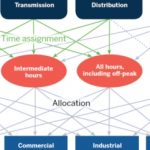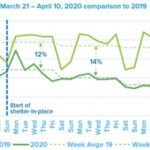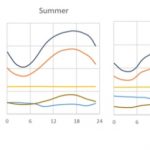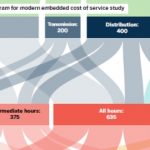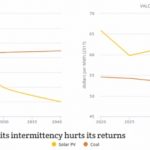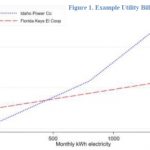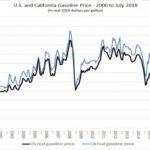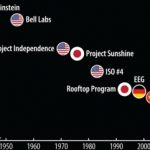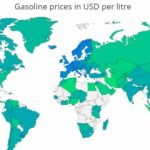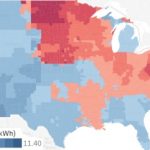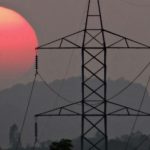Despite early scepticism, carbon pricing is making its mark globally. Today almost a quarter of global greenhouse gas (GHG) emissions are covered by a carbon price, compared to just 7% ten years ago. 73 national and sub-national jurisdictions have carbon pricing, explain Joseph Pryor and Venkat Ramana Putti at The World Bank, writing for the Florence School of Regulation and quoting from the World Bank’s State and Trends of Carbon Pricing 2023 … [Read more...]
Grid-scale modelling of Distributed Energy Resources and dynamic pricing for all customers
Smart grids can solve multiple problems now and throughout the lifetime of the energy transition. The supply from hundreds (existing + new wind, solar, etc.) and ultimately millions (rooftop solar, EV batteries) of power sources can be matched in real time with demand from all major customer devices (air conditioners, water heaters, batteries, EVs). Dynamic pricing keeps the peaks low and the troughs high. It takes the pressure off total load, … [Read more...]
The new era of electricity needs modern ways to charge customers
Today’s technologies – wind, solar, storage - have widely differing cost and operating characteristics to fossil fuels. So the way customers are made to cover those costs – assigning different rates to different customer classes – should change. Jim Lazar and Mark LeBel at RAP explain why and how, referencing their comprehensive manual “Electric Cost Allocation for a New Era”. They describe how the full range of technologies now establishing … [Read more...]
Sales down, but cash preserved too: Regulators take note when setting new Utility rates
Utilities are suffering financial impacts because of the current pandemic, and regulators will be asked to address them when they set new electricity rates. The intention will be to help the utilities recover while keeping bills affordable for their customers. But not all the impacts on the utilities are bad news, explains Jim Lazar at RAP looking at the U.S. Though revenues have dropped and some labour costs risen, there is a list of things that … [Read more...]
Don’t blame Wind, Solar for Coal cycling. It’s everyday variable demand
Joseph Daniel at the Union of Concerned Scientists explains why variable renewables like wind and solar are not forcing coal plants to cycle (ramp up and down). He presents data from the U.S. that clearly shows it’s straightforward variable demand that’s doing it, because demand has always varied considerably throughout the day. So stop blaming the arrival and growth of wind and solar for this “inefficiency”, he says. These renewables have plenty … [Read more...]
Electric utilities: pathway to a costs and pricing revolution
The 20th century method of setting electric utility rates are being made redundant by the new technologies of the modern age. It’s currently a three-step process - determining the revenue requirement, deciding how to divide costs among ratepayers, then designing the rates themselves. It uses traditional categories: generation, transmission and distribution; cost classifications (energy-related, demand-related, customer-related); customer/rate … [Read more...]
The Six Energy Paradoxes that slow the sector’s progress
Gerard Reid at Alexa Capital takes a high level look at what he sees as six systemic problems faced throughout the energy sector. They can be found at every level, across all technologies and markets. He calls them the Six Energy Paradoxes. All of them are acting as a serious drag on progress, Transition or not. Take the Market Efficiency Paradox. Utilities should adjust their prices to meet changes in energy supply and demand. Higher supply or … [Read more...]
Nuclear in 2020: a global look ahead at policy, financing, politics, by country
Dan Yurman presents his worldwide review of nuclear’s prospects. 19 nations are covered. He explains while some countries are planning to scale down nuclear, like South Korea and France, some are increasing investment, like China. Others remain stuck over policy, pricing, financing and politics (e.g. Japan, the U.S.). Exporters of plants, led by Russia, are making moves – not always easily - in Eastern Europe and the Middle East. R&D … [Read more...]
Electricity pricing: shifting costs on to households that can afford it
Utilities need to invest in the future, and the Transition needs to be paid for by their customers. The less painful that is to each customer, the more publicly acceptable it will be. Maximilian Auffhammer at the Energy Institute at Haas explains how electricity pricing usually combines a fixed monthly charge with a block rate price (the charge for each additional unit of energy). Here he reviews a new report that scrutinises how different firms … [Read more...]
Calculating the effect of $50/tonne CO2 on energy prices
Despite much debate, governments are hesitant to raise – or even impose – carbon pricing, worried about the direct impact it will have on businesses and consumers.To help understand its effect Severin Borenstein at the Energy Institute at Haas has crunched the numbers of a $50/tonne CO2 price, very expensive by today’s standards. He’s calculated the actual price increases on a gallon of petrol/gasoline, gas- and coal-fired generation, and natural … [Read more...]
Grid balancing: Electric Cars are a lot like water heaters, so relax
Electric water heaters consume as much power as electric cars, drawing on the grid in much the same way: everyone’s doing it at roughly the same time of day. The U.S. already has 60m such heaters and manages to balance the grid with no problem. So adding tens of millions of electric cars should be very manageable even without direct control of when the cars charge, says Jim Lazar at the Regulatory Assistance Project (RAP). It only takes two to … [Read more...]
Can other technologies replicate Solar PV price reductions?
Catherine Wolfram at the Haas School of Business reviews the new book “How Solar Energy Became Cheap” by Greg Nemet. It traces Solar PV’s history from Bell Labs in 1954 through to the present. The phenomenal price drops mean today’s cost/kWh is 1,000 times lower than in the 1970s. The analysis is split into four epochs when output was dominated by US, Japanese, then German and finally Chinese production. How much were improvements thanks to sheer … [Read more...]
$400bn in global fossil fuel consumption subsidies, twice that for renewables
At over $400bn in 2018, global fossil fuel consumption subsidies are more than double those for renewables. That makes sense while governments worldwide use energy subsidies to help poor consumers, and clean energy still makes up a smaller proportion of the global energy mix. But it makes the transition harder: cheaper fossil energy means more is consumed, and it’ll take longer for clean energy to compete it away. The IEA’s WEO Energy Analysts … [Read more...]
Energy Efficiency should target inefficient use, not all use
Energy efficiency should not just be a matter of reducing energy consumption. As renewables grow pricing and profits should encourage renewable consumption. After all, renewables aren’t a problem. And greater renewables consumption means less fossil fuels. Yet consumer pricing models with a low fixed price + high variable rate are designed to discourage all consumption, warns James Bushnell of the Energy Institute at Haas. He says we must … [Read more...]
India kick-starts wholesale electricity market reforms
India’s wholesale electricity market is no longer fit for purpose according to Dheer Patel of the Regulatory Assistance Project (RAP). Long term procurement contracts are forcing distribution companies (discoms) to buy expensive energy when cheaper alternatives are readily available. So the Central Electricity Regulatory Commission (CERC) is launching a six-month pilot, starting 1st April, that enables “least-cost dispatch” of all centrally … [Read more...]




